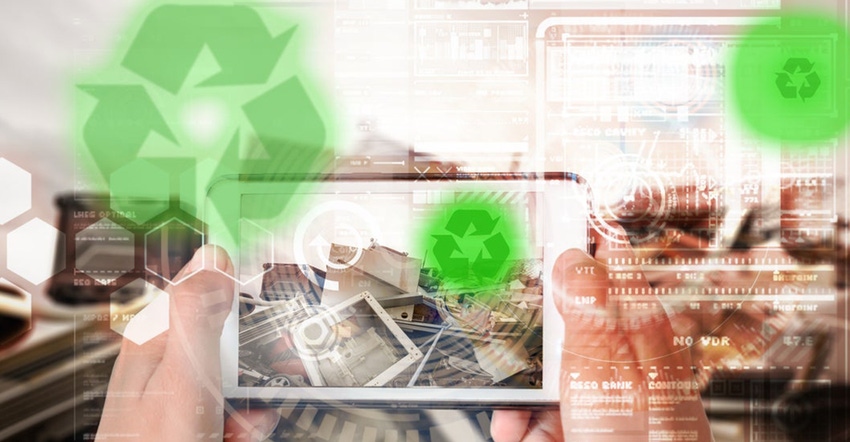
Intel recently released a white paper on “The Role of Reverse Logistics in Reinventing the Technology Product Life Cycle,” which discusses the importance of managing e-waste and how the Company’s circular-economy philosophy can serve as an example of how companies can reinvent the product lifecycle with an eye toward sustainability. Through its efforts, Intel has been able to ensure that less than one-percent of materials returned to Intel end up in a landfill.
We wanted to learn more, so we sat down with Supply Chain Manager Greg Skrovan. Read on for his take on the challenges and benefits of reuse, mining for value, how Intel aims to continually improve its sustainability efforts and more
What makes computer reuse a challenge?
There are contributing factors that make it more challenging. It can range from consumers’ reluctance to recycle (i.e. due to concerns about security of personal information on the computer), to the perceived value of the computer (i.e. the computer might still ‘work’ and so it’s stowed away in a closet ‘just in case’ someone may need to use it again), or simply people don’t know how to recycle. Computer and related components can be complex, technical devices. And one of the key challenges in the process is ensuring a secure chain of custody from the time the computer leaves the user to when the data is erased or shredded. So, it requires a level of investment to screen and refurbish them to enable some level of re-use.
What other challenges do manufacturers encounter in refurbishing and reusing electronic products?
There are three big challenges that I’d like to call out.
The logistics challenge to physically return or recover the products from the users. These products are dispersed to millions of consumption points across the globe. Arranging collection and transport can be challenging and costly.
It requires investments in screening and repair capabilities if you want to return the products to a usable condition.
While there are a growing number of global repair or recycle vendors, it does require an investment to source the best vendor for your needs and work with that vendor to ensure that the maximum amount of electronic components can be reclaimed or recycled and avoid waste to landfill.
Is it costly for companies to refurbish these products?
It comes down to understanding the value opportunities being missed by not refurbishing. It’s a return-on-investment decision to analyze the cost of refurbishment versus the costs to re-manufacture it. If there isn’t the right return on investment, we seek the ‘next best alternatives’ which could include reselling on secondary markets, dismantling the product for spare parts, or reclaiming or recycling the materials so they can be used elsewhere.
Do you anticipate any reluctance on the part of consumers, to purchase used computers?
It depends on the buyer and their motivations and intentions. However, the secondary or re-use market is continuing to grow. The electronic secondary market is forecasted to be $50B. We are seeing that some of the reasons to buy ‘used’ include a motivation to embrace circularity and avoid e-waste. Others may choose re-used products from a cost perspective — customers can buy technology that meets their needs at a lower price.
Do you have any thoughts about working with electronic waste recyclers and collectors to help with the supply?
Intel has collaborative relationships with our reclaim and recycle suppliers. We strive to continue to evolve our programs to ensure we’re maximizing the ability to reclaim as much of the materials from our returned products as possible. We’re proud that less than one-percent of the waste from our returned products ends up in a landfill. We’ll continue to seek opportunities to drive the maximum recyclability and re-use of the products that are returned to us. And we’ve set a goal to achieve zero total waste to landfill and implement circular economy strategies for 60% of our manufacturing waste streams in partnership with our suppliers by 2030.
Does Intel plan to promote its zero-waste plan to the public to encourage consumers to turn in old products?
We’re eager to explore alternatives to work with our customers and other partners to promote ‘take back programs.’ For instance, Intel partnered with Reverse Logistics Group Americas (RGLA) to implement a program for Intel NUC devices. This program provides a channel for customers to return their old devices once they no longer need them.
Are consumers more reluctant to purchase used equipment in the COVID-19 era?
I’m not aware of any specific examples of reluctance due to COVID. However, the COVID-19 related mobility and supply chain challenges that have been impacting other areas of the supply chain will have impacts to the used-equipment market. In fact, the opposite could be occurring as increased telecommuting, distance education, and at home entertainment dramatically increased the overall electronic demand and pushed used IT and used electronic components to an all-time high.
How specifically does Intel plan to expand its efforts in the future?
For our Reverse Logistics program we’ll continue to seek opportunities to recover and re-use more of our returned products and reclaim and recycle. Our aspirational goals are to: increase recovery rates from 50% to 70%; increase the percentage of recycled materials in our reverse logistics packaging and continue to make decisions that lessen environmental impacts and enable more value from the circular economy. We’re eager to work with our internal business groups, customers and suppliers to explore areas to help them achieve their circularity goals.
Do you think this could act as a case study for what other brands could do to divert and/or recycling these materials?
We want to share our learnings with other brands that are looking to start or expand similar programs. Sharing best practices in this area will ultimately help expand the impacts of circularity on the entire electronics supply chain and eco-system.
Anything else you’d like to share?
I am so proud of the work our team has done to ensure that less than one-percent of the product materials returned to Intel end up in the landfill. In addition, our circular economy strategies delivered $30 million in added value to Intel in 2020 and we expect this will continue to grow. This is an incredible example of the value of the circular economy and the strategic role of the reverse logistics. We hope our story can help inspire other companies.
About the Author(s)
You May Also Like




